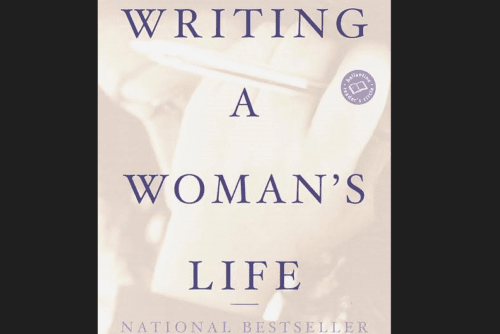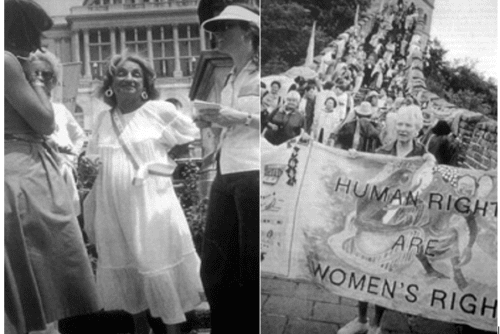Now more than ever before we hear Muslim voices in opposition to the “mainstream,” particularly on issues of gender and sexuality. These challenging and queer voices forcefully push us to consider how this mainstream came to be and what it actually tells us about Muslim societies. These voices further challenge notions of “orthodoxy” and “authority” and to question to what extent they are wholly constructed on heteronormativity, patriarchy, and hegemonic masculinity. The marginalized are no longer accepting their position at the periphery. Such an inquiry in to varieties and differences in gender and sexuality further lead to questions about varieties and differences of “Islams”—from denomination to denomination. This has led to the intersection of queer studies and Islamic studies as an emergent field of inquiry. At the very core of this critical inquiry through lived realities is an investigation into notions of “being” in relation to what is perceived, accepted and strengthened as “normal” and how have they helped shape the generalized understandings of Islam.
Masculinities studies, a term coined by the renowned gender scholar Raewyn Connell, pushed us to consider that there is more than one way to be a man. Masculinities studies is then an essential tool in queer studies too. This led me to explore the intersection of masculinities studies with Islamic studies. The imagined center point of Islamic studies has always been challenged, yet now more than ever before is this hegemonic masculinity construction being challenged.
In much of the previous academic work on masculinity it has assumed to be a “monolithic unproblematic entity, with patriarchy attaining a universal status as the single cause of the oppression of women.”1 In response, the Western study of masculinities has pushed to understand nonpatriarchal masculinities, but the terms “masculinity” and “patriarchy” are closely linked in a historical sense, since both were taken up by socialists and radical feminists during the late 1960s as part of the process of theorising male dominance.2 So, until recently, masculinity has tended to be absent from mainstream academic research. This was largely due to the “unitary notion of masculinity” which was often employed in studies largely concentrated on women and girls.3 However, men’s studies cannot be regarded as a new focus of research since the current interest in gender arose in response to the fact that social disciplines had previously been concerned almost exclusively with men.4 Discussions surrounding patriarchy and masculinity in Islam have not flourished, and so there are immense possibilities for research on Islamic masculinity and Islamic masculinities. Muslim feminists, or feminists in general, have critiqued “masculinity” to expose what these damaging constructions do in society but they are most often restricted to battling heterosexual hegemonic masculinity. Their challenge has not gone unnoticed. By disrupting the singular notion of Islamic masculinity amongst Muslim “men” as competing claims to the Islamic may well disempower those forms that are destructive and damaging in Muslim societies.
In broaching this topic of masculinities in Islam, one runs the risk of committing orientalism or making other colonizing moves. Although Edward Said’s critique, Orientalism, won him many high accolades, it has, at times, made an uncomfortable task of critical scholarship on Islam (or Muslims), especially by non-Muslim or Western scholars who may forever be labelled as Orientalists looking to study the “Islamic East,” a charge which dismisses not only their work but also their questions. Such sentiments are increasingly finding their way into contemporary studies that aim to “correct” the perceptions of Muslims by “Orientalists.”5 Studies that use Said’s Orientalism as a key research method tend to strengthen the divide between the “East” and the “West” using a postmodern, postcolonial argument to create some form of legitimacy. But where do we go from there and how does this vantage point lead discussions on masculinities studies and queer studies in Islam? The Iranian social scientist Shahin Gerami questions whether masculinity studies is a form of
“cultural imperialism” on Islamic societies:
When we incorporated feminist ideas in our women’s movement, we were addressing injustice, exploitation, and the dehumanization of women in the name of tradition, religion or authenticity. That is different from masculine or even social cleavages, but we are still a long way from claiming any victory for women’s rights, despite incremental gains. We, the others, have accused the Orientalists of being intellectual thrill seekers, the upper-class equivalent of soldiers of fortune or academic bungee jumpers. Since feminism frowns upon exploring the other for our thrills, what can be gained from masculinity research in cultures struggling with basic human rights for women.6
Gerami makes an important point if one assumes that masculinities studies is the study of strengthening patriarchy and heteronormativity. Yet the field of masculinities is far from that. It is these idealised notions of an Islamic masculinity that have played an essential role in restricting the basic human rights of women and their scrutiny is now essential. However, often such scrutiny and inquiry is framed away from that imagined “mainstream Islam” that seems, in a way, too sacred to question. Such separations have led some to adopt a more “secular” approach in their work on gender and sexuality in societies and cultures without asking those queer questions from Islamic traditions. It is within my own work on The Crisis of Islamic Masculinities (published by Bloomsbury Academic) that I aimed to bring together the work of sociologists/anthropologists in their continual reminder that there are more than one way to be a man and then see how this messiness is lived out through the Qur’anic text by Muslim men throughout history. The stories and tales that the Qur’anic text is filled with push us to consider questions that may not have been asked of it before. What does the fact that Jesus had no father or wife say about his Islamic masculinity? What does the fact that Muhammad had multiple wives say about his Islamic masculinity? These questions are important because the lives of Muslim men, women and transgendered persons who do not fit neat models of gender and sexuality have for too long been dismissed but in actuality complement the messy and dysfunctional characters within its most sacred and divine text, the Qur’an.
It is important to connect cross-cultural discussions relating to issues of gender and sexuality. How are Muslim men and women discussing their gender and sexuality issues within their given context? And in what languages and cultures are these taking place? There is much to be learned from the dominance of the western, English-speaking academy that aims to “translate” everything. It is important to build cultural bridges but also appreciate that this often leads to strengthening the western side of that bridge. Queering anything requires one to appreciate this complexity and attempt to understand different contexts through their narrative and embodiment.
Certainly, lived masculinities and femininities have been an interest for sociologists and anthropologists mostly from the West but how does one complement this work with discussions about what is deemed “Islamic”? One of the main reasons for this is due to prevalent understanding that such discussions and debates are something “western” and in imposing such discussions on “Islam” a new form of Orientalism is taking place. All these concepts and categorisations are being now being queried.
The term Islamic masculinity then assumes a single trend of masculinity, which is rarely the case, for “it is clear from the new social research as a whole that there is no pattern of masculinity that is found everywhere. We need to speak of ‘masculinities,’ not masculinity. Different cultures, and different periods of history, construct gender differently.”7 The plural term masculinities is then a word that goes against the grain but requires serious consideration in the study of Islam and Muslims. If there is not one correct way to be a man, or a women or whichever way one wants to identify then intersecting this with many forms of Islam pushes a wider appreciation of the term “Islamic.” For example, I have found many Muslim men and women live warm, happy, and fruitful lives in accordance with what some may deem as a fundamentalist, even extremist, Islam, yet certain forces who believe they uphold modern Islam, often equated with words such liberal and progressive, don’t just dismiss those fundamentalists’ lives but fail to see them for what they are.
A course I took early on in my undergraduate career at the University of Stirling in Scotland—Race, Ethnicity and Gender: Building Blocks for the Critical Study of Religion with Mary Keller and Jeremy Carrette—helped me realize that these identity markers and pluralism are the categories that are sorely needed for interrogating the Muslim experience in the world we live in today. Many young boys, including Muslim boys, are bombarded with masculine role models to emulate. Sociologists have found that this dominant form of masculinity “influences boys and men’s understanding of how they have to act in order to be ‘acceptably’ male, and that this dominant mode is associated with heterosexuality, toughness, power, and authority, competitiveness and the subordination of gay men.”8 While there may be no centralized effort in Islam or in other societies made to shape men in the form of some ideal masculinity, masculating processes occur in quotidian, repetitive social interactions. As Raewyn Connell, the pioneer sociologist of masculinities studies argued, ‘Masculinities are configurations of practice within gender relations but requiring a structure that includes large-scale institutions and economic relations over and above the face-to-face relationships and sexuality.’ While masquerading as a personality trait, masculinity has a de facto institution backing it.9 Questioning and critiquing Islamic studies through masculinities studies and queer studies helps us to better appreciate the diversity that surrounds us and many colours that emerge from Islamic traditions that have for far too long been shaded black or white. The questions may not lead to concrete answers and that is fine too because finding the perfect answer in this emerging field may well be an oxymoron.
- M. Mac an Ghaill, ed., Understanding Masculinities–Social Relations and Cultural Arenas (Buckingham: Open University Press, 2000), 1. [↩]
- M. Roper and J. Tosh, eds., Manful Assertions: Masculinities in Britain Since 1800 (London: Routledge, 1991), 8. [↩]
- M. Mac an Ghaill, ed., Understanding Masculinities–Social Relations and Cultural Arenas, 1. [↩]
- C. Haywood,, and M. Mac an Ghaill, Men and Masculinities–Theory, Research and Social Practice (Buckingham: Open University Press, 2003), 8. [↩]
- Joseph Massad’s book Desiring Arabs is a detailed analysis into the development of perceptions of Arabs from an Orientalist and Arab point of view. Massad, a student of Said, uses his mentor’s argument on Orientalism as a way to introduce his research focus: “Edward Said’s Orientalism showed how Orientalism created the Oriental and how it shaped and still shapes the views of that Westerners hold about Arabs since the European Enlightenment. Orientalism generated an important body of scholarship about various kinds of Orientalism representations of Arabs and Muslims in Europe but, unfortunately, little if any scholarship was produced in its wake about Orientalist representations in the Arab world, whether in Arabic or in European languages.” J. A. Massad, Desiring Arabs (Chicago: University of Chicago Press, 2008), 47-48. [↩]
- S. Gerami, “Mullahs, Martyrs, and Men–Conceptualizing Masculinity in the Islamic Republic of Iran” in Men and Masculinities–Critical Concepts in Sociology, Volume 5, ed. S. M. Whitehead (Oxford: Routledge, 2006), 103. [↩]
- R. W. Connell, The Men and the Boys (Oxford: Polity Press, 2000), 10. [↩]
- S. Frosh, A. Phoenix, and R. Pattman, Young Masculinities: Understanding Boys in Contemporary Society (Palgrave: Basingstoke, 2002), 75-76. [↩]
- R. W. Connell, The Men and the Boys, 29. [↩]




